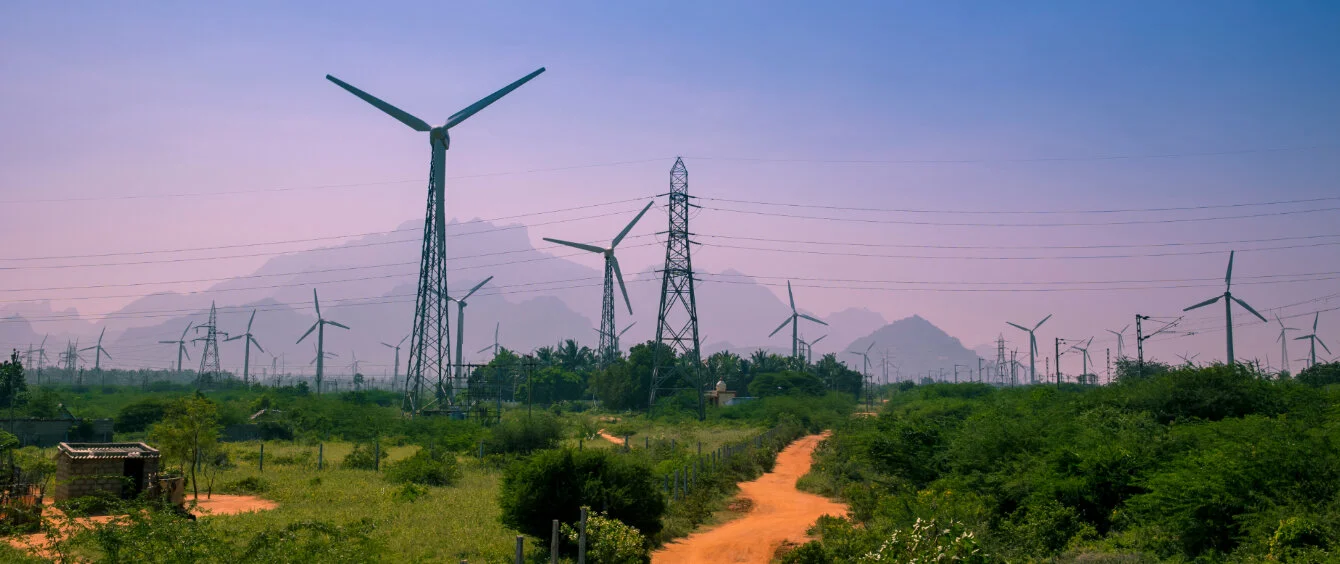India is no stranger to renewable energy. At the end of June 2022, it hosted nearly 41 GW of onshore wind and close on 58 GW of solar, placing it fourth and fifth respectively in the world in terms of capacity. Yet such is the size of the country, its population and electricity system that renewable energy accounted for about 22% of electricity generated in 2021, including large hydropower.
India depends heavily on coal-fired generation. It is the second largest producer and consumer of the carbon-heavy fuel worldwide.
Common to many developing nations, India faces the challenge of building clean energy capacity at sufficient speed to meet new demand – driven by a mix of population growth, industrialization and rising incomes – and, at the same time, reduce its use of fossil fuels, particularly coal, in order to meet its climate targets.
Offshore wind so far untouched
With no let-up in its pursuit of increased solar and wind capacity onshore, India is seeking to develop its substantial offshore wind resources, following in the path of many north European nations, which have seen offshore wind costs plummet in recent years.
Ambitious goals have been set laying down an auction roadmap for 37 GW of offshore wind by 2030, with two areas identified as particularly suitable for development – the coasts of Gujarat and Tamil Nadu.
According to the World Bank, India has a technical wind resource of 195 GW, 112 GW of which could be exploited with traditional fixed-bottom installations in less than 50 metres of water. Of this, the bank says, 54 GW lies off Tamil Nadu and a further 36 GW off Gujarat.
Further analysis by India’s National Institute for Wind Energy (NIWE) has identified eight zones each off the two states, which could host a total of nearly 35 GW and 36 GW respectively.
Putting the right framework in place
Stakeholder consultations have identified a number of issues which need to be addressed to launch India successfully into an era of offshore wind. Billions of dollars in public and private finance needs to be unlocked to support the nascent sector — $2.5-$3.0 billion per GW, not including port and transmission infrastructure, according to some estimates.
To do so, the contractual and regulatory framework surrounding the sector needs to evolve to secure investor confidence.
The government has taken positive steps to do so. This summer, it announced an auction timetable aimed at the initial development of 10-12 GW. Delhi intends to auction 4 GW of capacity this year and 4 GW each in 2023 and 2024, with the annual auction volume rising to 5 GW a year from 2025-2029.
To incentivise developers, capacity auctioned in the first two years will attract benefits such as carbon credits, while capacity awarded through to 2029-30 will also gain from free power transmission from offshore substations to the onshore grid.
The setting of clear targets and tender volumes is an important step, as is the identification of the NIWE as a single point of contact for all project approvals.
Long-term visibility on tender volumes enables supply chain companies to make investment decisions with more certainty. The development of domestic manufacturing capability is in tune with the government’s industrial policies and should in time help to reduce costs.
Committee recommends viability gap funding (VGF)
Contractual clarity is also needed with regard to government support mechanisms and off-take partners. The government has proposed ‘viability gap funding’ as the way forward and, in August, the parliamentary standing committee on energy suggested a VGF requirement for Rs 14,212 Crores (€ 1.78 billion) for offshore wind energy projects with additional expenditure of Rs 13,500 (€ 1,69 billion) for associated transmission infrastructure.
The committee also suggested time limits for the completion of environmental impact assessments to avoid the lengthy permitting processes which have hampered development in other offshore wind markets.
Off-take partners identified
Offtake agreements are another source of uncertainty. The primary purchasers of wholesale electricity in India are the state-level distribution companies, which suffer from high levels of debt. This is the result of consumer electricity prices set below the cost of production and the non-payment of subsidies by state governments.
The government has proposed instead the more creditworthy Solar Power Corporation of India as a purchase agreement partner for offshore wind.
Port infrastructure needs development
Finally, there are physical constraints. Turbines are getting ever larger in pursuit of economies of scale. This means Indian ports will probably have to deal with turbine sizes of 12 MW or larger.
Renovations to suitable ports to increase their capacities are likely to be funded via public-private cooperation, and offshore wind developers and financiers will be keen to see that appropriate facilities are ready when needed. Other potential constraints include the availability of skilled labour and the need to harness support from coastal communities to facilitate offshore wind development.
All these elements need to fall into place to create what could be one of the world’s largest offshore wind markets, providing a huge new renewable energy resource in support of India’s energy transition.
With an overall target of 50% of generation capacity from renewable energy by 2030, India will certainly need to tap every renewable energy source available.
